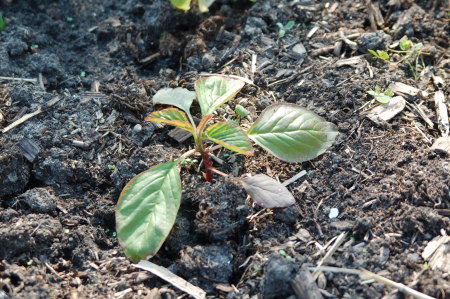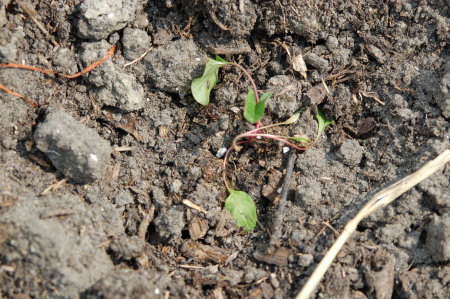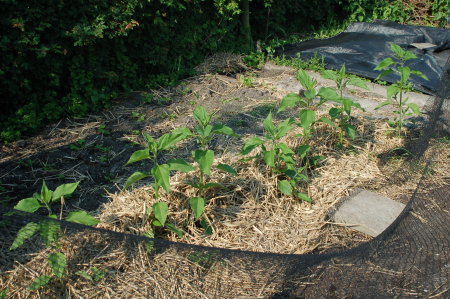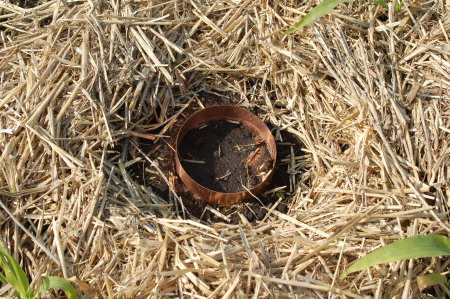Recently Jeremy of the Agricultural Biodiversity Weblog posted about why he hates farm subsidies so much, and coincidentally an article today on the BBC website announced a new initiative to once again reform agricultural subsidies in Europe.
While I agree with Jeremy that agricultural subsidies are generally a problem, I don’t think the solution is as simple as to say we need to eliminate them. It seems to me there’s often a great deal of complexity in these kinds of discussions. For example Jeremy said “Australia and New Zealand have shown that farmers can thrive without subsidy, …”. However, what I remember hearing about a year ago was the rate of farmer suicides in Australia was second only to that of India. Kate also in this discussion and previously pointed out Australian farmers don’t receive any subsidies, but also mentioned they do get drought relief.
It seems to me that farming subsidies are not going away tomorrow, nor are government policies that manipulate agricultural policy. During the great depression in the US and other countries it became unprofitable to be a farmer and government subsidies were needed to prevent a total collapse of the system. After WWII food shortages required government intervention to increase agricultural productivity and efficiency. There is simply no separating food from government policy, there will always be a need to help farmers in distress and there will always be a need to stimulate production or improve efficiency in times of shortages.
I think it’s more constructive to talk about how government policies and subsidies need to be reformed, rather than talk about their elimination. Here’s my view of the future.
The International Context
One of the biggest problems today with food policy are the repercussions around the world when one or a few countries makes a unilateral decision. For example when a decision is made to aggressively stimulate biofuel production in Europe and the US, this causes food shortages worldwide. Demand from growing economies like China and India are also putting pressure on food stocks.
On the other hand, farmer subsidies in the US and Europe flood foreign markets with cheap goods, putting local farmers out of business.
These problems are being made much worse by the increasingly global nature of the world’s economy, and treaties like the Biodiversity Treaty, World Trade Organization treaties and others that harmonize intellectual property rights and markets across the world.
My feeling is we need to return to a situation where countries are more responsible for addressing the needs and surpluses that exist within their own borders. Of course trade will take place internationally, but rather than depend on an energy intensive international market where food is transported long distances without regard to the environmental costs, more emphasis should be placed on producing food as close as possible to where it is consumed. Individual countries, or trading blocs like the EU or NAFTA, should manage their own food markets with minimal interference from other countries.
Every country should have the freedom to address their own food needs above and beyond any other obligations. Debt should not force countries towards export crops if they have domestic food needs and are able to provide this themselves. If it’s more efficient for them to produce export crops and use the proceeds to purchase food, this should also remain an option, but they shouldn’t be under pressure to go this route if it’s not generally to their advantage to do so.
De-emphasis of Commodities
It’s handy to discuss food in terms of commodities. For example, in bushels of wheat or corn. In this way you can do some handy math. For example, since agricultural chemicals and fertilizers come primarily from fossil fuels, which is also needed for transportation and tractors, you can convert barrels of crude oil and cubic meters of natural gas into bushels of grain and then into tons of meat.
The problem with looking this way at commodities is it is too black and white, and it promotes a level of inefficiency that reduces the quality of the food we eat. It means the farmers who produce the commodities don’t care about the quality of what they produce, the levels of pesticides or other contaminants or environmental damage caused by their chemicals.
The main problem is commodities are the basis of energy intensive centralized distribution and processing systems and primarily useful for highly processed foods like feed lot meats or baked goods made with white flour. Michael Pollan explains in his book Omnivore’s Dilemma much better than I can here how corn is the basis of almost all food in the US. Soybeans are used in a similar way in Europe.
Another problem with commodities are they promote efficiency through scale, making small farms unprofitable.
There is a place for commodities, and governments will always think this way, but healthier foods are ones grown in other ways.
The Big Players
During the Clinton years, government resources were used to hold tobacco companies responsible for their products and actions. Smokers in the US were able to claim compensation for their illnesses and compensation was received for tax evasion in Europe.
It’s time we held food and agricultural companies to the same standard. Seed companies like Monsanto and Syngenta should be held responsible for removing their genetic contamination from the environment. Food companies like Archer Daniels Midland should pay compensation to people suffering from obesity and other health problems related to their products.
There is a place in agriculture for products from the big players, and will be for some time to come. At the same time the activities of these companies need to be regulated, and limited to what benefits the consumer and is safe for the environment.
Intellectual Property Rights
No patents should be allowed on any life form, or the genetics contained within them.
Registration of plant and animal varieties in Europe and elsewhere should be stopped, and farmers should be allowed to use whatever varieties and breeds they see fit for their needs, without payment of royalties. They should be free to replicate this plant varieties or animal breeds as they see fit. Primary responsibility for developing new breeds and varieties should rest with the farmers in their own fields, and government aid should be provided as necessary possibly together with the larger agriculture companies.
Energy and Environmental Issues
Emphasis should be placed on local food production, without the need for excessive fossil fuel based or other inputs.
While chemical sprays and fertilizers should be available to farmers facing a crop failure, they should not be relied on for regular use. Time and money should be invested in developing sustainable food systems, optimized on a regional basis, that don’t require these inputs. Taxes and subsidies should be structured to discourage the use of these inputs.
The Need for New Farmers
In Jermey’s article linked to above and previously he’s discussed the nature of farmers. I’m really in complete agreement with most of what he said.
The modern farmer is clever, knows how to beat systems of subsidies and is always striving to reduce the amount of physical labor that goes into their work. A typical farmer is delighted when confronted with a GM Round-Up Ready plant variety, because the prospect of being able to regularly douse their crops with weed killer is much better than having to pull weeds. For them farming is driving a tractor and spraying chemicals, and when other work is required they will look for a different crop to grow.
For the typical modern farmer, organic just means using different chemicals and there is no motivation to pursue permaculture principles or take care of the land.
When faced with the kind of reform proposed in this post, the typical farmer will rebel. Like what we see in France regularly, they are inclined to hit the streets in protest.
There is the need to phase out this kind of farmer, and the mentalities that go along with being one.
Some farmers will embrace the kinds of reforms suggested here, and for the others interim redundancy payments and job retraining should be provided.
The New Farmers
Who will replace the old farmers?
First, people should take on the responsibility for growing much more of their own food. There should be much greater use of urban gardens, community gardens and allotments or container gardens when these are not possible.
Beyond this the world is increasingly becoming full of people, often well paid professionals, who are longing for a rural lifestyle and dream of owning their own farms. Many of these people subsidize being a farmer with their own savings or take on a part time job alongside of farming. Many other people are waiting to take this step, they just need a little financial help to do it.
Transparency in Agricultural Policy
There are really few institutions as undemocratic as EU Agriculture. They meet behind closed doors and make their decisions with secret ballots. News of what they are working on is almost impossible to come by. They are virtually immune to public opinion.
They have exempted themselves from the carbon emissions trading scheme in Europe, in spite of being one of the largest sources of greenhouse gasses.
They are really good at passing good sounding measures, that turn into nothing in practice.
The situation with the US Farm Bill that periodically gets debated in the US congress is not a lot better. It’s full of tidbits for special interests, and public opinion is largely ignored.
It’s time to give people a say in what they eat!
Subsidies
Okay, here’s the touchy issue, subsidies.
First of all, I think no subsidies should ever be awarded to companies directly. I think all agricultural subsidies should only be awarded to individual farmers, the land they own or contracts awarded to companies for the development of some needed item, for example a contract awarded to a seed company for the development of a new plant variety.
Farmers should own an amount of land appropriate for who they are, for example in the neighborhood of 3-15 acres (1.5-6 hectares) for a typical farmer. No subsidies should be available to non-farmers who own agricultural land, landless farmers or farmers with very large holdings.
Subsidies should be awarded publicly and transparently, with consideration taken for public opinion.
Subsidies should be interim in nature, in the case of farmers be targeted to those with the lowest income, and total subsidies should be capped at a reasonable amount.
All reasonable steps should be taken to minimize the impact of subsidies on foreign markets, including if necessary providing comparable subsidies to affected farmers in these markets.
Close supervision of subsidies should take place, and if necessary rules changed to prevent abuse.
For example, there is a genuine need now for new small farms with sustainable systems of farming optimized for local conditions. People starting new farms need low or no cost loans, and guaranteed financing. They need enough money to take them through a few years of crop failures, and the learning curve that goes with starting a new farm. They need to to establish their markets, so perhaps for a short time need purchase guarantees for their crops. Total direct benefits under these circumstances should be capped at for example US$50,000 per year, and limited to 3-5 years. Loan guarantees should be capped at US$500,000 or so, perhaps much less depending on local economies and realistic needs.
If a farmer experiences a crop failure or needs assistance in avoiding a crop failure, a one time assistance to a maximum of 50% of the market value of the crop at issue is reasonable. Reasonable effort should be taken to prevent abuse, like limiting it to 1 out of 5 years and requiring steps were taken to prevent crops loss.
During difficult economic times, farmers should receive simple direct aid as necessary to prevent their farming operations from collapsing.
There may need to be special modest subsidies to farms with particular cultural, historical or local significance. For example a specific farm serving an area that doesn’t have other good sources of food, or one making use of special historical or experimental techniques. Perhaps a farm with special biodiversity.
Beyond this, there needs to be a way a farmer can get an emergency loan or subsidy if he has an urgent reason, for example a major tractor repair or just has a personal emergency. A reasonable amount for this would be US$5000, not more than once every few years.
During periods of food shortages, prices paid to farmers should be guaranteed by governments at a premium, in order to stimulate production. This too should be capped at a reasonable level. Surplus foods should not be sold on foreign markets.
It seems to me no one farmer should ever receive more than about $50,000 in any one year, and this amount should be the exception rather than the rule!
Sufficient time should be taken to negotiate these subsidies with interested parties, including foreign governments.








